CONTENTS
|
|
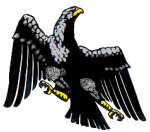
10. The Germans of
the Polish Ostgebiete
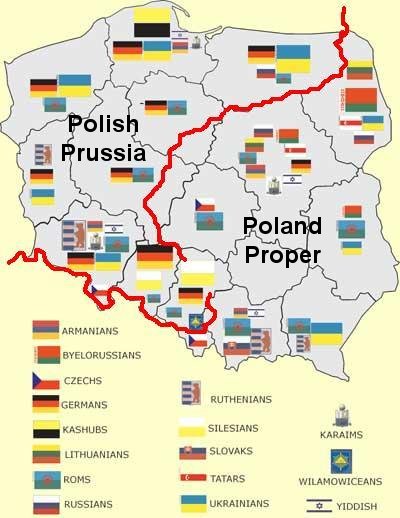 Minority Groups in Polish Prussia and Poland Proper, 2002
Minority Groups in Polish Prussia and Poland Proper, 2002
The claim is often made by Poles that after the 1944-47 explusion of the German population from the eastern Prussian Territories of East Prussia, West Prussia, Pomerania, East Brandenburg, Silesia, Posen and from Poland proper, that Poland became an ethnically homogenous nation of only Poles. The truth is far different. Apart from the fact that Masurians of East Prussia and the Shlonzaks of Upper Silesia were forced to assimilate along with Kashubians of West Prussia, when the Poles set about trying to repopulate the vaccated Prussian territories they could not find enough people to fill the cities and take over the empty German farms. Accrodingly, large numbers of new colonists were brought in from the Soviet Union, principally Ukrainians. As the map above shows, the New Poland is far from being a country of just Poles. And since it was admitted into the Euopean Union (EU), minorities like the Prussian Germans who remained after 1947 have become more vocal. The census of 2002 revealed the following statistics:
Minority and regional languages |
Population
by declared language (in 1000) |
Stateded
language (in %) |
Minority
group |
Population
by stated nationality (in 1000) |
Stated
nationlity (in %) |
| German |
196.8 |
33.0 |
Germans |
147.1 |
23.7 |
| Silesian |
56.4 |
9.5 |
Silesians (Schlonzaks) |
172.2 |
27.8 |
| Byelorussian |
40.2 |
6.7 |
Byelorussians |
47.6 |
7.7 |
| Kashubian |
52.6 |
8.8 |
Kashubs |
5.0 |
0.8 |
| Ukrainian |
21.1 |
3.5 |
Ukrainians |
27.2 |
4.4 |
| Romany |
15.7 |
2.6 |
Gypsies |
12.7 |
2.1 |
| Russian |
12.1 |
2.0 |
Russians |
3.2 |
0.5 |
| Lithuanian |
5.7 |
1.0 |
Lithuanians |
5.6 |
0.9 |
| Ruthenian |
5.6 |
0.9 |
Ruthenians |
5.8 |
0.9 |
| Czech |
1.2 |
0.2 |
Czechs |
0.4 |
0.1 |
| Slovak |
0.8 |
0.1 |
Slovaks |
1.7 |
0.3 |
| Armenian |
0.3 |
0.1 |
Armenians |
0.3 |
0.04 |
| Hebrew & Yiddish |
0.2 |
0.03 |
Jews |
1.0 |
0.2 |
| Karaim |
0 |
0 |
Karaims |
0.04 |
0.01 |
| Tatar |
0 |
0 |
Tatars |
0.5 |
0.1 |
| Non-defined |
187.6 |
31.5 |
Non-defined |
31.5 |
30.6 |
| Total |
596.3 |
100.0 |
Total |
621.0 |
100.0 |
Source: Marta Moskal,
Language minorities in Poland at the moment of accession to the EU
For some reason, the Masurians of East Prussia have not been included as a separate ethnic group, unless they have been counted as German. What is important to note is that there were, in 2002 Poland, 147,100 Germans (some statistics record 152,900) and 172,200 Schlonzaks (Silesians, mixed German and Polish) which together represent a sizeable minority. In some partf of Upper Silesia, especially in Oppeln (Opole), Germans constitute a small majority:
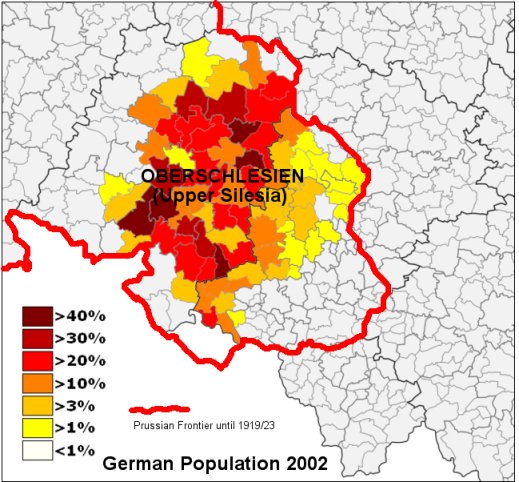
Combining the German and Schlonzak figures together would give a figure 319,300. The Silesian Autonomy Movement (RAS) is now so strong that the Polish Government declared it to be a "potential threat to Poland's interests". Following the 2006 local elections, RAS gained control of some municipalities and county councils in Kattowitz (Katowice) and Oppelen (Opole). There are 325 Polish schools that use the German language as the first language of instruction, with over 37,000 students attending them. Most members of the German minority are Roman Catholic and only some of them are Protestants (the Evangelical-Augsburg Church in Poland). A number of German language newspapers and magazines are issued in Poland.
Most Germans in Poland live in Silesia (93% of all Germans in Poland): Opole Voivodeship - 104,399 i.e. approximately 69,9% all Germans in Poland, and approximately 10% of the population of this Voivodeship and Silesia Voivodeship - 31,882 i.e. approximately 20.8% of all Germans in Poland. In the other voivodeships, the percentage of Germans in the population lies between 0.632–0.007%.
The next largest German-speaking area is Allenstein (Olsztyn)in East Prussia which centres around the organisation, Deutsche Minderheit in Ermland und Masuren. It has its own flag, resmebling the old Prussian white and black horizonal bicolour, shown below:
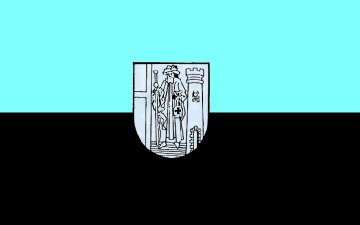
The Upper Silesian town of Wilmesau (Wilamowice) is a curiosity where a unique morbiund High German (Dutch) language is spoken, a mixture of German, Dutch and Scottish.
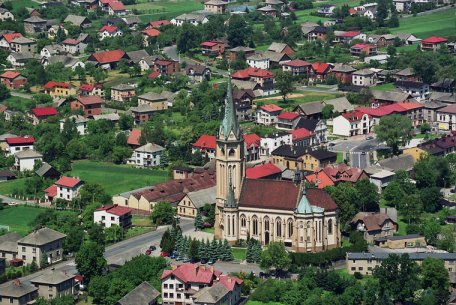 Welmesau, Upper Silesia (Oberschlesien)
Welmesau, Upper Silesia (Oberschlesien)
Other statistics claim that there as many as 800,000 Germans still living in Poland as a whole, and some say as many as 1,100,000. For the official webpage of Germans living in Poland, see Deutsche Minderheit in Polen.
| region |
population |
German |
% German |
| 38,557,984 |
147,094 |
0.381 |
|
| Opole Voivodeship |
1,055,667 |
104,399 |
9.889 |
| Silesian Voivodeship |
4,830,000 |
30,531 |
0.632 |
| Warmian-Masurian Voivodeship |
1,428,552 |
4,311 |
0.302 |
| Pomeranian Voivodeship |
2,192,000 |
2,016 |
0.092 |
| Dolny S'la;sk Voivodeship |
2,898,000 |
1,792 |
0.062 |
| West Pomeranian Voivodeship |
1,694,865 |
1,014 |
0.060 |
| Greater Poland Voivodeship |
3,365,283 |
820 |
0.024 |
| Kuyavian-Pomeranian Voivodeship |
2,068,142 |
636 |
0.031 |
| Lubusz Voivodeship |
1,009,005 |
513 |
0.051 |
| Mazowsze Voivodeship |
5,136,000 |
351 |
0.007 |
| Łódz' Voivodeship |
2,597,000 |
263 |
0.010 |
Statistical Data According to Wikipedia


Created 05.07.2009 | Updated 05.07.2009
Copyright © 2009 SBSK Preussens Gloria
Alle Recht vorbehalten - All Rights Reserved
|
|


